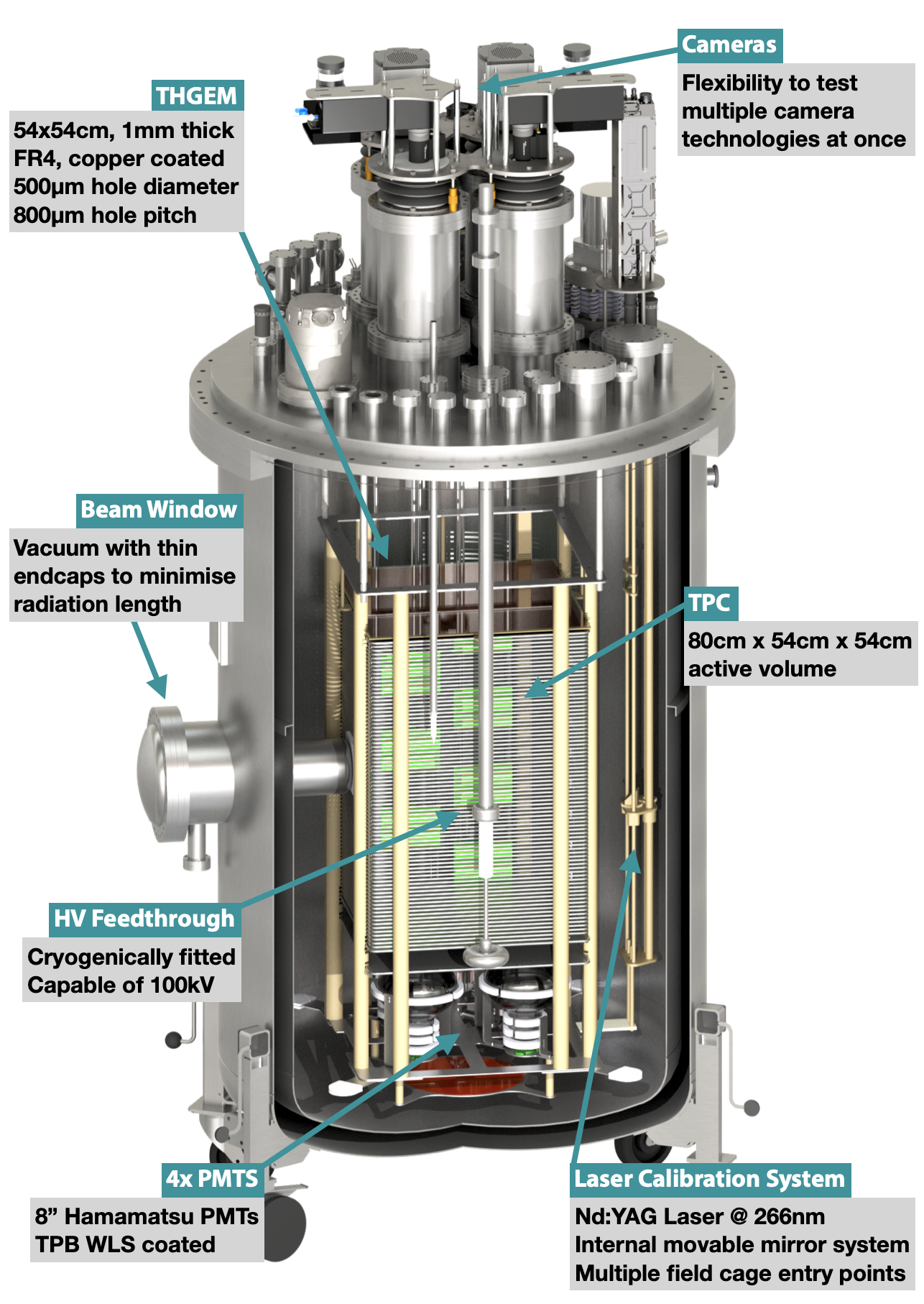The ARIADNE Detector
Overview
The ARIADNE detector has been designed for the research and development of future optical readout techniques as well as general TPC technologies. Flexibility and portability have been key tenets of the design. Flexibility allows the detector to change as the field of research advances. Portability allows the detector to be easily moved so as to be placed in beamlines for characterisation.

Drift Region & High Voltage
At the centre of the detector is the active volume drift region. This measures 80cm in height and 52cm in width and depth and is surrounded by a 80-ring field cage. A custom 100kV HVFT is used to supply voltage to the cathode at the base of the active region. The field has been tested to 80kV (1kV/cm) but is normally ran at a lower voltage.

Field cage and high voltage feedthrough
THGEM

Microscope view of THGEM holes
A THick Gas Electron Multiplier (THGEM) is used in the gas phase to amplify the drifted electron signal. Within the THGEM is also where the secondary electroluminescence light (S2) is produced. Physically, the THGEMs used are 1mm thick FR4 boards with copper plating on both sides. Within this 440,000 holes are drilled in a hexagonal layout with diameters of 500µm and spacings of 800µm. A large voltage (~3kV) is applied across the two copper planes giving a very strong electric field (30kV/cm), which allows the charge amplification to happen.

52cm x 52cm Segmented THGEM
Cameras
EMCCDs
Andor Electron Multiplying CCDs (EMCCDs) were the first readout devices used on ARIADNE. Due to their single photon sensitivity they provide great energy resolution and due to the large number of pixels (up to 1024x1024) provide excellent spatial resolution.

Timepix Cameras
The TPX3Cam Timepix Camera is the next step in developing optical readout for LArTPCs. Combined with an image intensifier they have a similar level of sensitivity to the EMCCDS but have a much faster and efficient readout, allowing continuous streaming 3D data taking to be performed.

Illustrative setup of the TPX3Cam with an image intensifier and lens.
Example of cosmic events taken with the Timepix Camera. Visible is a 20msec drift window.
Cryostat

Top flange of the cryostat showing the range of available ports.
The ARIADNE detector is contained within a custom 1600l vacuum jacketed cryostat. A special feature of the cryostat is a beam window that extends on both sides of the cryostat wall and reduces the material between the active volume and a particle beam. The top of the cryostat is a 1.4m diameter flange which contains all the access ports and is also used to suspend the TPC in the cryostat.

Diagram showing how the beam window interfaces with the TPC and cryostat wall.
Laser Calibration System
An experimental laser calibration system has also been designed and produced. A laser is mounted externally on the top flange of the cryostat and its beam directed into the cryostat to a mirror and off into the active volume. When in the active volume it creates ionised electrons which are drifted to the anode and simulate particle tracks. This can therefore be used as a calibration tool for the detector, providing a stable source of 'tracks' and allowing the electric field uniformity to be characterised. The mirror itself sits on a movable platform which allows the direction and position of the beam within the detector to be changed.

Laser calibration system mirror platform facing the TPC field cage. Visible are gaps in the field cage to allow the laser beam to enter the TPC.